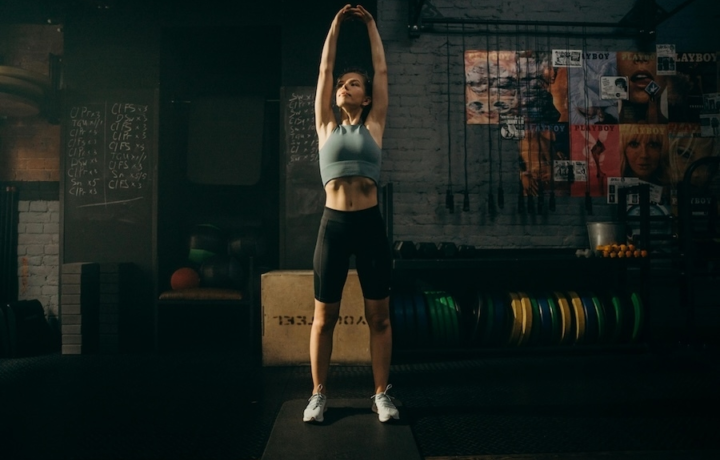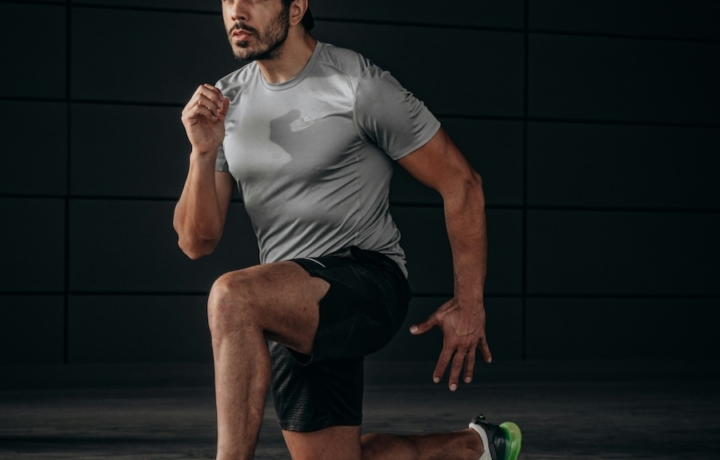Exercise
Cobra Yoga Pose

Cobra Yoga Pose
How to Perform
- Lie face down on your mat with your legs extended behind you, tops of feet on the floor, and place your hands directly under your shoulders with fingers pointing forward.
- Press the tops of your feet, thighs, and pelvis firmly into the floor to engage your leg muscles while keeping your hips grounded.
- On an inhale, begin to straighten your arms to lift your chest off the floor, keeping your elbows slightly bent and pulled in toward your body.
- Draw your shoulders back and down away from your ears, broadening across your collarbones and creating space between your shoulders and neck.
- Keep your neck in a neutral position by gazing softly at the floor in front of you, avoiding the tendency to crane your neck backward.
- Engage your lower back muscles to protect your spine, distributing the bend evenly throughout your back rather than compressing your lower vertebrae.
- Hold the pose for 15-30 seconds while breathing deeply, allowing your chest to expand with each inhale and creating more length through your spine.
- To release, exhale and slowly lower your chest back to the floor, then relax your arms alongside your body.
Important information
- Never force your body to lift higher than is comfortable – focus on length rather than height in the pose.
- Keep your elbows slightly bent to avoid hyperextending your arms, especially if you're hypermobile.
- Maintain equal weight distribution through both hands to prevent tilting to one side.
- If you experience lower back pain, reduce the height of your lift or place a folded blanket under your pelvis for support.

Cobra Yoga Pose
Exercise Details
Primary Muscles
Muscle Groups
Mechanic
Built for progress
Take the guesswork out of training
Create personalized AI-powered workout plans that evolve with you. Train smarter, track every rep and keep moving forward, one workout at a time.






The Cobra Pose, or Bhujangasana in Sanskrit, is a fundamental yoga position perfect for beginners seeking to develop core strength and spinal flexibility. This gentle backbend primarily engages the erector spinae muscles along your spine while providing a complementary stretch for the abdominals, making it an excellent balanced movement for core development.
As a versatile component of any yoga practice, Cobra Pose serves multiple functions depending on when you incorporate it. During warm-ups, it gently awakens the spine and prepares the body for more intense movements by increasing blood flow to the core and back muscles. When used in recovery or cool-down sequences, it helps release tension built up during more strenuous exercises, allowing the body to gradually return to its resting state while maintaining awareness of proper alignment.
The beauty of Cobra lies in its dual nature as both a stretching and mobility exercise. While it creates a wonderful opening through the chest and shoulders, simultaneously stretching the abdominals and hip flexors, it also promotes healthy spinal mobility by encouraging gentle extension through the thoracic and lumbar regions. This combination makes it particularly valuable in counteracting the effects of prolonged sitting and hunched postures that dominate modern life.
Regular practice of the Cobra Pose can contribute to improved posture, reduced lower back discomfort, and enhanced breathing capacity as the chest expansion allows for fuller inhalations. The subtle strengthening effect on the back muscles also provides greater support for everyday movements and other physical activities. Many practitioners find that incorporating this pose into their routine brings not only physical benefits but also a sense of energetic opening and mental clarity that comes from mindful movement and conscious breathing.
As with any yoga posture, the benefits of Cobra come not from pushing to extremes but from finding your appropriate edge and breathing into the sensations with awareness and respect for your body's unique structure and needs.
FAQ - Cobra Yoga Pose
Cobra Pose primarily targets the erector spinae muscles along your spine while also engaging the trapezius, rhomboids, and shoulders. As you lift your chest, you're strengthening these back muscles while simultaneously stretching your abdominals and hip flexors.
For most people, Cobra is safe when performed with proper form, but those with acute back pain, disc herniations, or spinal injuries should consult a healthcare provider first. If you have chronic lower back issues, start with a modified version keeping your elbows bent and limiting your lift height to reduce pressure on the lumbar spine.
Beginners can modify by keeping forearms on the ground or using less height in the backbend, focusing on length rather than height. For a greater challenge, try extending your arms fully while maintaining space between your shoulders and ears, or hold the pose longer while incorporating deeper breathing patterns.
The most common mistakes include pushing up too high too quickly, scrunching your shoulders toward your ears, and overarching the lower back instead of distributing the bend throughout the spine. Always keep your elbows slightly bent, gaze forward rather than up, and focus on length through your entire spine rather than just bending backward.
For improved spinal mobility and posture, incorporate Cobra Pose into your routine 3-5 times per week, holding for 15-30 seconds per repetition. Many practitioners benefit from performing it daily, especially if you spend long hours sitting, as it effectively counteracts the forward hunching that occurs during desk work.








